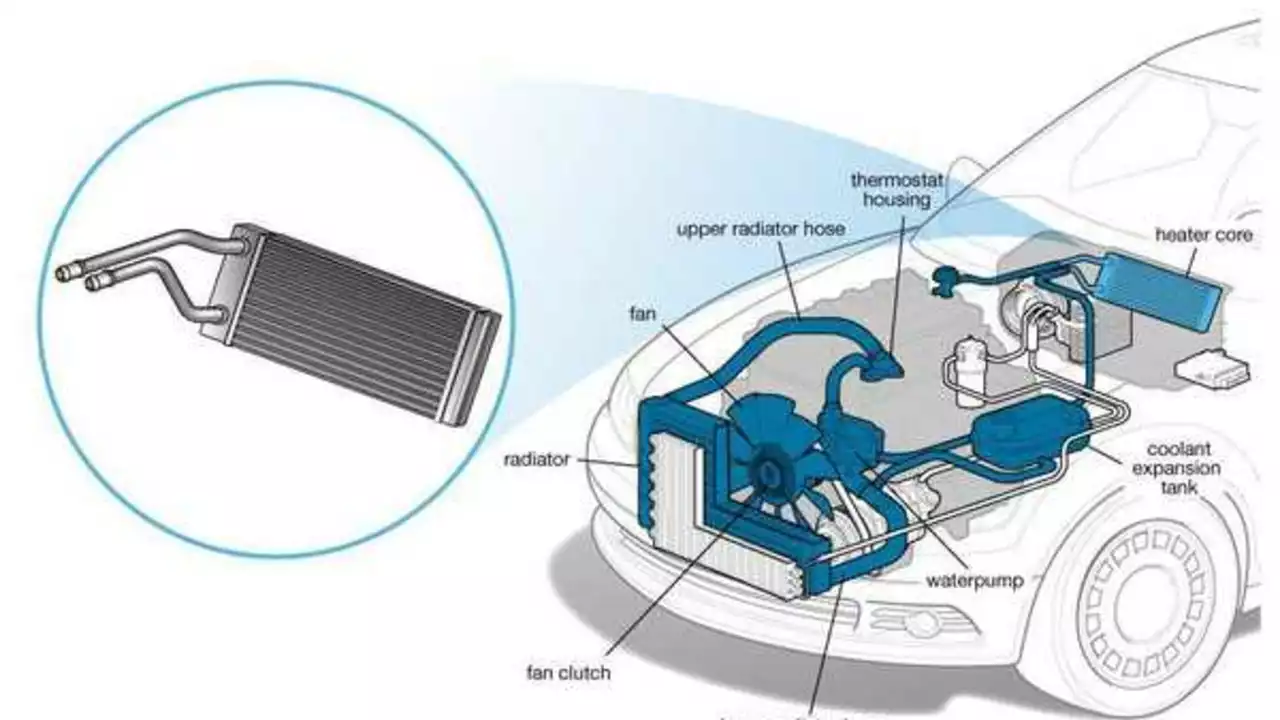Understanding Your Car's Cooling System
Let's dive under the hood together, shall we? Specifically, we'll venture into the mysterious depths of a car's cooling system. The star of today's show is none other than the bottom radiator hose. It's an unsung hero, quietly toiling away to keep your vehicle from overheating in the middle of rush hour traffic. It's as essential to a car's well-being as that morning cup of Joe is to most of us. Now, if you've ever peeled the layers back on your ride, you'll know that the bottom radiator hose is more than just a random piece of rubber - it's a critical part of the car's cooling system. When all goes well, it efficiently shuttles coolant to where it's needed most, keeping the temperature in check while we cruise to our favorite tunes.
The Importance of the Radiator Hose
Your car's heart is its engine, and like any good heart, it needs a well-functioning circulatory system. The cooling system acts as this circulatory system, with the radiator hose serving as essential arteries. So, you could think of a vehicle’s engine like you would a human body, and the radiator hose? Well, that’s a vital blood vessel pumping away to prevent your precious automobile from burning out. Now, isn't that something to mull over as we embark on this radiator hose removal journey?
Getting Your Hands Dirty: Tools and Preparation
Before we get down to business, it's important to know what we're getting ourselves into. Safety is paramount, and preparation is key. One does not simply walk into Mordor without a plan, and the same goes for removing a car's bottom radiator hose. The tools you'll need include a pair of protective gloves (not just to keep your hands clean, but to protect them from potentially hot components), a drain pan, a pair of slip joint pliers, and obviously, a replacement hose.
Fun fact: did you know that vehicle cooling systems can contain over two gallons of coolant? That’s enough to fill a good-sized fish tank! Not something you want to leak onto your garage floor. Hence, the drain pan.
The Step-by-Step Dance to Removing the Bottom Radiator Hose
I remember once when I was a kid, my old pappy liked to tell me stories about when he was young, wrenching away on those dazzling chrome-dusted machines of his time. One day, he tossed me a pair of grimy gloves and lead me straight under the hood. There, amidst the maze of tubes and cables, he taught me a bit of car-ology. Among the lessons was how to remove the bottom radiator hose on a car, a task that’s since become second nature. It wasn't complicated, but it was memorable. I remember his words like it was yesterday. "Darius, it's all about the dance," he said. "You gotta know the steps."
So let's get down and learn this dance. First off, safety first. Put on your gloves. Rule number two, never work on a hot engine. Allow your ride to cool down and then, carefully, open the radiator cap. Place the drain pan under the radiator’s drain plug and let the coolant flow out. And here’s a handy tip: If you're environmentally conscious, remember to recycle the coolant properly.
Next, slide your pliers onto the clamp that holds the hose in place. Move it back and forth gently to loosen the clamp. As soon as the clamp is loose, pull the hose off. There will likely be more coolant in the hose, so keep your drain pan handy. Now you've pulled off the old bottom radiator hose, give yourself a pat on the back!
Fitting the New Bottom Radiator Hose
With the old radiator hose out of the equation, it's time to replace it. At this stage, if you're anything like me, it's also an excellent time for a victory jig. Feeling good? Great, let's slide the new hose onto the fittings. Make sure to secure it with the clamp. Bottle of coolant ready? Refill your radiator with the correct amount and type of coolant for your vehicle.
Once you've got the new bottom radiator hose installed and the coolant refilled, start your engine and let it run. Why? Because we want the circulatory system to kick in, distributing the fresh coolant throughout the system. It's like a revitalizing energy drink your car gulps down after a tough marathon! Now, keep a keen eye out for leaks. If you see any signs of leakage, turn off the engine and tighten up anything loose.
Taking Good Care of Your Radiator Hose
Like any essential part of your vehicle, the bottom radiator hose needs regular maintenance. Remember, it's an unsung hero that’s part and parcel of your car's health brigade. Keeping it in good shape will pay off in the long run. Make sure to check it periodically, and keep track of any change in the feel or appearance of the hose. If there's something strange in your car's neighborhood (like fluid puddles or a high engine temperature gauge), who ya gonna call? Yes, that's right, it's high time to check the bottom radiator hose. After all, a little vigilance goes a long way!
Ah, yes, the art of removing the bottom radiator hose on a car. It's simpler than you might think, and yet, it's an underappreciated skill in the world of DIY car maintenance. Next time you're chilling on the couch, mulling over your next project, why not consider getting to know your vehicle's cooling system a little better? Trust me, your car will thank you!

